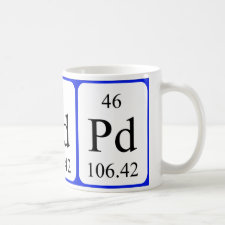
Authors: Lin S, Wei W, Wu XH, Zhou T, Mao J, Yun YS
Article Title: Selective recovery of Pd(II) from extremely acidic solution using ion-imprinted chitosan fiber: Adsorption performance and mechanisms.
Publication date: 2015
Journal: Journal of Hazardous Materials
Volume: 299
Page numbers: 10-17.
DOI: 10.1016/j.jhazmat.2015.05.050
Alternative URL: http://www.sciencedirect.com/science/article/pii/S030438941500446X
Abstract: A novel, selective and acid-resisting chitosan fiber adsorbent was prepared by the ion-imprinting technique using Pd(II) and epichlorohydrin as the template and two-step crosslinking agent, respectively. The resulting ion-imprinted chitosan fibers (IIF) were used to selectively adsorb Pd(II) under extremely acidic synthetic metal solutions. The adsorption and selectivity performances of IIF including kinetics, isotherms, pH effects, and regeneration were investigated. Pd(II) rapidly adsorbed on the IIF within 100 min, achieving the adsorption equilibrium. The isotherm results showed that the maximum Pd(II) uptake on the IIF was maintained as 324.6-326.4 mg g-1 in solutions containing single and multiple metals, whereas the Pd(II) uptake on non-imprinted fibers (NIF) decreased from 313.7 to 235.3 mg g-1 in solution containing multiple metals. Higher selectivity coefficients values were obtained from the adsorption on the IIF, indicating a better Pd(II) selectivity. The amine group, supposedly the predominant adsorption site for Pd(II), was confirmed by Fourier transform infrared spectroscopy and X-ray photoelectron spectroscopy. The pH value played a significant role on the mechanism of the selective adsorption in the extremely acidic conditions. Furthermore, the stabilized performance for three cycles of sorption/desorption shows a potential for further large-scale applications
Template and target information: palladium ion, Pd(II)
Author keywords: palladium, selectivity, Chitosan fiber, Ion-Imprinting Technique, adsorption mechanism



Join the Society for Molecular Imprinting

New items RSS feed
Sign-up for e-mail updates:
Choose between receiving an occasional newsletter or more frequent e-mail alerts.
Click here to go to the sign-up page.
Is your name elemental or peptidic? Enter your name and find out by clicking either of the buttons below!
Other products you may like:
 MIPdatabase
MIPdatabase









